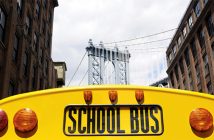
Heart Butte is an isolated town in the far reaches of northwest Montana. A statue of two Native American warriors welcome visitors to the Blackfeet Nation. On the 1.5 million-acre reservation, Greg Hirst, superintendent and French teacher, is working at educating 195 children from kindergarten through 12th grade at the Heart Butte School.
According to Carolyn Phenicie of The 74 Million, creating a better school, the only way to break the cycle of poverty, will be difficult. The school has not had the right programs and supports in place, and there is a high staff turnover. Recruiting teachers to such a remote location is difficult.
Jobs are scarce on the reservation, and many parents do not work. It is also true that Native Americans have higher rates of sexual violence, illicit drug use, domestic violence, and suicide than other races.
The school is strapped for money, and nature, as beautiful as it is, presents a threat. The physical plant needs repairs and teachers lack the necessary textbooks to update the curriculum.
“Our students can handle it. We’re Blackfeet, and we’re tough people,” Hirst said. “Our community knows that we’re tough-minded, tough-willed people, but for some reason our public school has not been able to meet those needs.”
But in Browning, the tribal headquarters, the school is new, beautiful, and houses about 500 students. Career and technical education programs are in place and growing, and one of the three elementary schools offers dual language immersion for kindergartners in the Blackfeet language. Hirst says incorporating students’ tribal identity could result in Heart Butte’s turnaround.
Heart Butte will be the eighth school in the sixth reservation community that is getting School of Promise assistance. This program is the state’s effort to improve its lowest-performing schools and is funded by a federal School Improvement Grant.
The grant allowed the state education office to provide instructional coaches, reading and math interventions, school board coaches, and instruction in a new teacher evaluation system.
The schools that stuck with the program have had some positive results. Montana Superintendent Denise Juneau said:
“I know when I walk into those schools now, they feel different. The community members talk differently about their school, where they feel it’s more welcoming. Students were leaving school, they’re now coming back. There’s just a sort of resurgence of belief in their public education system.”
At St. Ignatius High School, located on Montana’s Flathead Reservation, Chris Minnich, Executive Director the Council of Chief State School Officers, writes in a Huffington Post blog that he saw a note on a bulletin board. It stated: “I am going to graduate because I promised my mom I would, even if I lose her before I graduate.”
Amidst the concentrated poverty, lack of healthcare services, and the lower expectations, students at this reservation school, and across the nation, shoulder heavy burdens.
His visit to this school made Minnich more committed to help state chiefs close these opportunity gaps. This month leaders will attend the Council of Chief State School Officer’s Annual Policy Forum and will begin a discussion about what they can do to increase opportunity for all children. Some of the topics will be early childhood education and supporting teachers, especially in communities where it is more challenging to recruit quality instructors.




